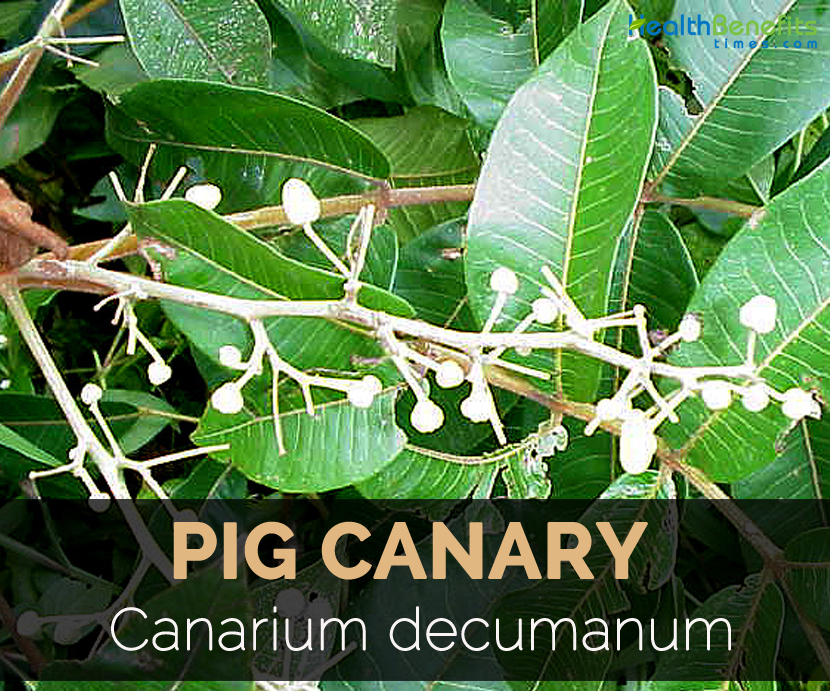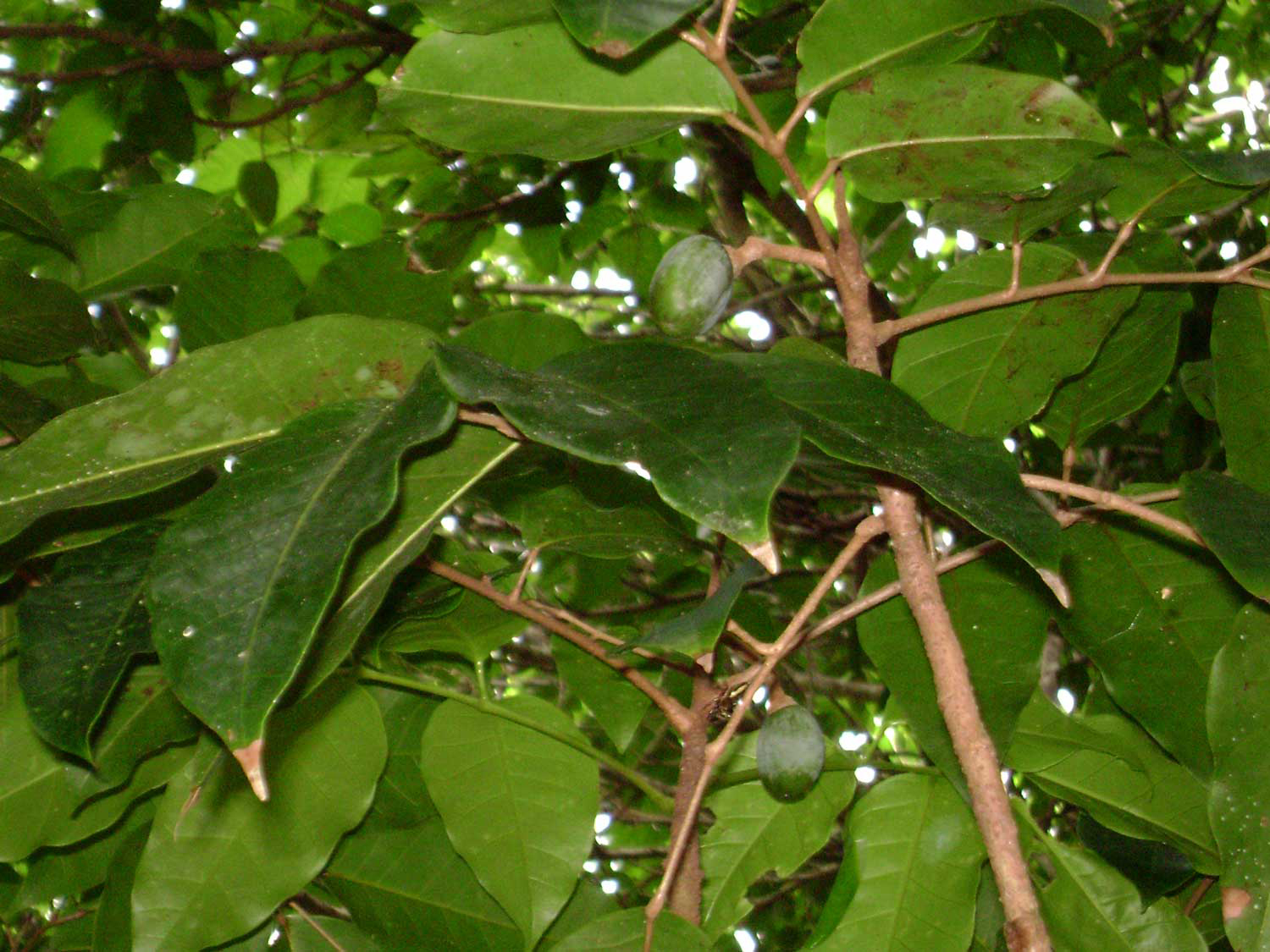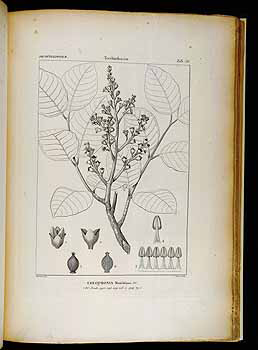Description
Canarium decumanum is a large tree with large buttresses. It is 8 meters high and 5 meters across. The tree grows to the height of 30-60 meters and trunk is 1-2 meters across. Small branches are angular and 1-1.5 cm across. Small stipules are found at the base of leaf stalk which looks like simple leaves without teeth. Leaves are formed in spirals and comprises of 4-6 pairs of leaflets. Leaves are 35 to 45 cm long and leaflets are oval and are between 5-30 cm long by 3-10 cm wide. Leaflets are papery and stiff. Flower clusters occur in leaf axils. The cluster of male flowers is 4-19 cm long with many flowers and female flower clusters are 5-7 cm long with few flowers. Fruits are triangular in cross section and measures 7-8 cm long by 4-6 cm wide.
Culinary uses
- The kernel is used for bakery products and to flavor ice cream.
- It is roasted or boiled and used in cooking in Melanesia.
References:
https://en.wikipedia.org/wiki/Canarium_decumanum
https://www.revolvy.com/page/Canarium-decumanum
https://wikivisually.com/wiki/Canarium_decumanum
https://www.itis.gov/servlet/SingleRpt/SingleRpt?search_topic=TSN&search_value=500749#null
Comments
| Pig Canary Quick Facts | |
|---|---|
| Name: | Pig Canary |
| Scientific Name: | Canarium decumanum |
| Origin | Malesia: East Malaysia (Sabah, Sarawak), Indonesia – (Moluccas, Kalimantan, Papua) and Papua New Guinea |
| Colors | Blue-black |
| Name | Pig Canary |
|---|---|
| Scientific Name | Canarium decumanum |
| Native | Malesia: East Malaysia (Sabah, Sarawak), Indonesia – (Moluccas, Kalimantan, Papua) and Papua New Guinea |
| Common/English Name | Jelamu, Kedungdong, Jilapat, Pamotodon, Kerari |
| Name in Other Languages | Indonesia: Minang (Papua), Kenari Sabrang, Jilapat, Kenari Besar, Jelemuq, Kedungdong, Pamatodon; Malaysia: Jelamu, Pomotodon (Sabah), Pomotodon (Sarawak) |
| Plant Growth Habit | Canopy, evergreen, tall, perennial tree |
| Plant Size | 54 metres (180 ft) tall |
| Bark | Grey, rough and flaky |
| Leaf | Ovate-oblong, 35-45 cm long |
| Flower | Yellow-brown |
| Fruit shape & size | Ovoid drupe, 7-8.5 cm by 4.5-6 cm |
| Fruit color | Blue-black |
| Seed | Ribbed, 1 cm across |





